Top 5 Real Estate Business Trends

by Eric Lam - Published 8/16/2023
by Eric Lam - Published 8/16/2023
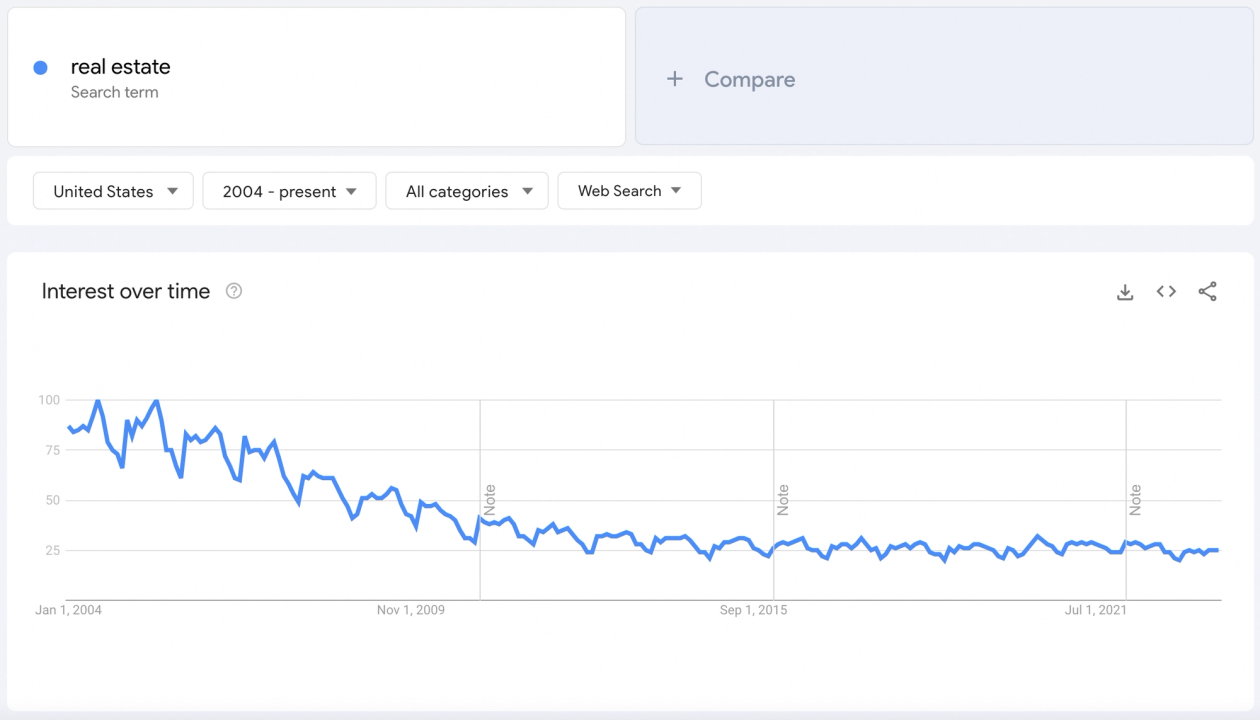
Over the years, this industry has navigated through various economic downturns, technological disruptions, and societal transitions, only to emerge stronger and more resilient. The backbone of such resilience is its ability to anticipate and adapt to changes, akin to a ship adjusting its sails to best capture the wind.
Historically, real estate was perceived as a static domain, where brick and mortar structures were the primary focus. Fast forward to the present day, and it has transformed into a dynamic sector intricately intertwined with technology, social values, and global events. In an era where change is the only constant, the real estate realm is no exception.
For industry professionals, investors, and stakeholders, a forward-looking approach is not just beneficial—it's essential. Strategic planning and decision-making rooted in the present won't suffice. One must have a keen eye on the horizon, discerning shifts and trends that are on the rise. This proactive approach ensures that when the wave of change arrives, businesses are not just reacting to it but riding atop it, steering their ventures towards continued success.
Within this ever-evolving tapestry, several threads or trends stand out, shaping the fabric of the modern real estate industry. These trends, whether driven by technological innovation, shifts in consumer behavior, or broader societal transitions, hold the key to the future trajectory of the industry. By delving deep into these patterns, industry leaders and aspirants can equip themselves with the knowledge and strategies to navigate the complexities of the contemporary real estate landscape.
Introduction to Contemporary Real Estate Trends

Current trends in the real estate sector are not mere passing phases; they reflect deeper societal shifts and technological advancements, playing a significant role in molding the future of the industry.
Trend #1: Proptech

Understanding Proptech:
Proptech, short for property technology, is like the bridge connecting two realms - the time-honored practices of the real estate sector and the dynamic world of modern-day technology. This union marks an exciting era for the property industry, infusing it with innovations and capabilities previously unimagined.
At its core, proptech is not just about implementing technology into real estate but reimagining how we interact with physical spaces, using digital tools. Think of it as the evolution of real estate in the digital age, similar to how fintech has revolutionized the financial sector.
In the past, the process of buying, selling, or managing properties often involved hefty paperwork, manual procedures, and time-consuming processes. Today, with the advent of proptech, these processes have undergone a significant transformation. Platforms now allow for virtual property tours, eliminating the need for potential buyers to be physically present. Advanced AI-driven algorithms provide precise property valuations in real-time, offering both buyers and sellers a clear understanding of the market value. Moreover, property management has seen a digital overhaul with automated systems handling everything from rent collection to maintenance requests, streamlining operations and enhancing efficiency.
Beyond these functionalities, proptech is also leading the charge towards more sustainable and intelligent living spaces. With the integration of smart home technologies, properties can now learn and adapt to the preferences of their inhabitants, optimizing energy usage and enhancing overall living experiences.
Its influence on real estate operations:
From digital platforms streamlining property transactions to AI-driven market analysis, proptech enhances efficiency, reduces costs, and offers a more comprehensive view of the market.
Trend #2: Remote Work and Its Implications
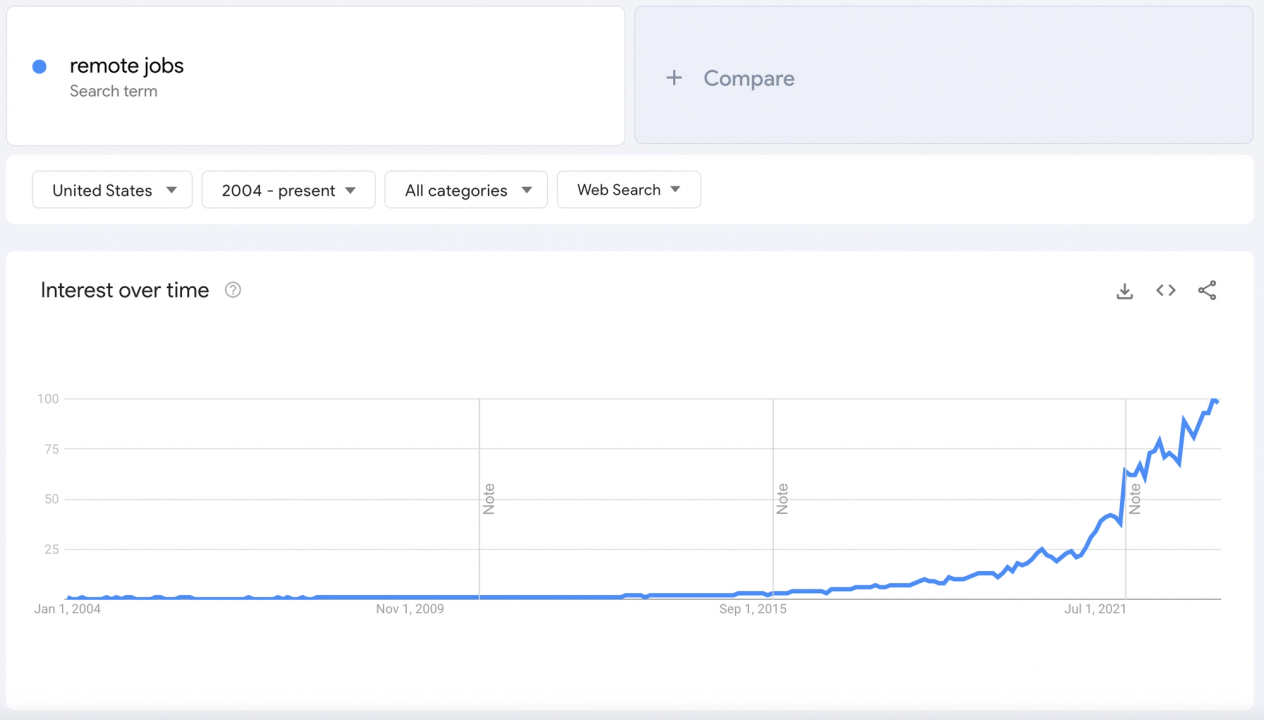
Decreased urban demand:
In today's fast-paced digital age, the integration of technology into traditional sectors is not just an upgrade; it's a transformation. Proptech stands at the forefront of this revolution within the real estate industry. Let's delve deeper into how it's reshaping the landscape, providing solutions that are more efficient, cost-effective, and holistic.
1. Streamlining with Digital Platforms:
Before the onset of proptech, the property transaction process was often lengthy and fraught with challenges. Potential buyers and sellers had to navigate a maze of paperwork, manual verifications, and endless back-and-forth negotiations. Today, digital platforms have drastically simplified this journey. With user-friendly interfaces, these platforms allow stakeholders to list, discover, and finalize property transactions with just a few clicks. Additionally, digital contracts and e-signatures further expedite the process, ensuring that deals are closed faster and with less hassle.
2. AI-Driven Market Analysis:
Artificial Intelligence (AI) is no longer the stuff of science fiction. In the realm of proptech, AI plays a pivotal role, especially when it comes to market analysis. Traditional methods of market research often involved sifting through heaps of data, trying to discern patterns and trends manually. Now, AI-driven tools can analyze vast datasets in real-time, identifying trends, predicting market shifts, and offering insights that were previously inaccessible. For instance, AI can assess variables like neighborhood development, infrastructure projects, and socio-economic factors to forecast property value appreciation in a particular area.
3. Enhanced Efficiency:
Efficiency in real estate isn't just about speed; it's about optimizing processes to ensure that every step adds value. Proptech tools, from Customer Relationship Management (CRM) software to virtual reality property tours, ensure that both real estate professionals and clients experience a smooth, streamlined journey. By automating repetitive tasks and centralizing information, these tools free up time and resources, allowing professionals to focus on what truly matters: building relationships and closing deals.
4. Cost Reduction:
Time, as they say, is money. By expediting processes and reducing the need for physical interventions (like on-site property visits or paper-based documentation), proptech considerably cuts down operational costs. Additionally, by leveraging data analytics, stakeholders can make more informed decisions, avoiding costly missteps or investments in less lucrative properties.
5. Comprehensive Market View:
One of the standout advantages of proptech is the holistic view it offers of the real estate market. Digital dashboards compile and present data from various sources, ensuring that users get a 360-degree perspective. This includes insights on property demand and supply, price trends, buyer preferences, and even macro-economic indicators that might influence the real estate market.
In conclusion, proptech is not just a buzzword; it's a paradigm shift. By amalgamating the best of technology with the intricacies of real estate, it promises a future where property transactions are not just simpler and faster, but smarter and more strategic.
Surge in commercial real estate tax appeals:
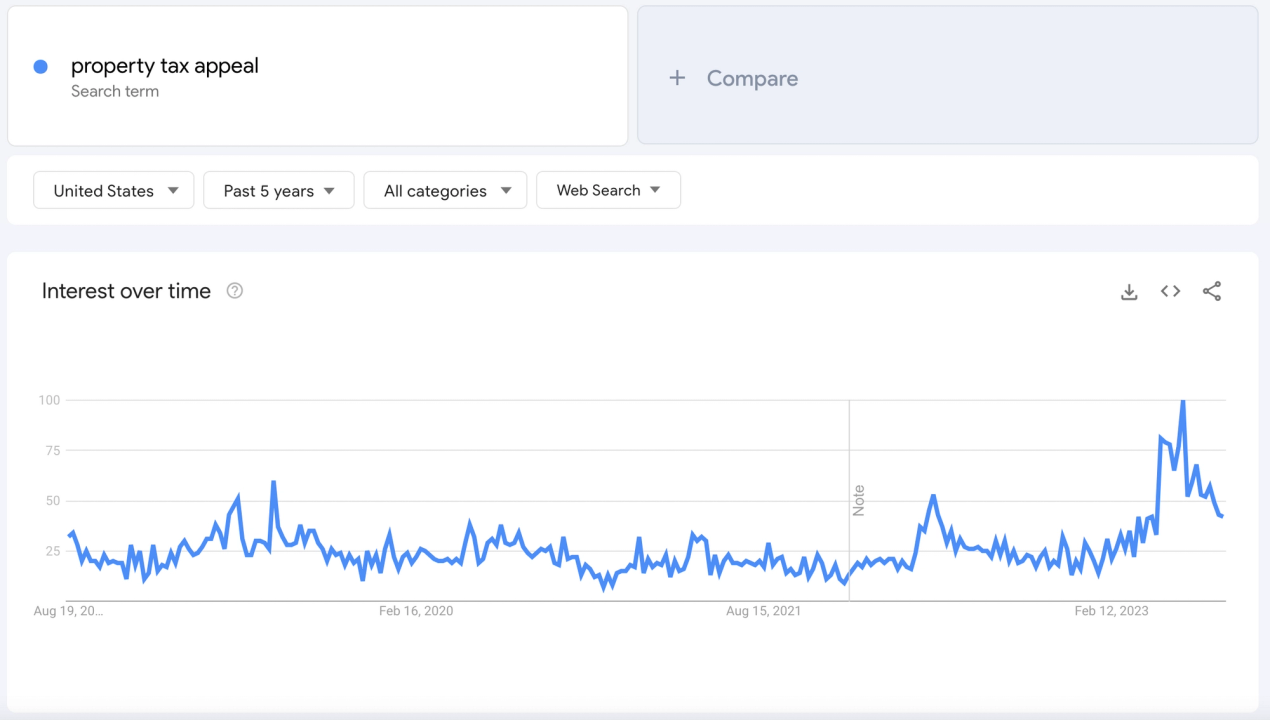
In the ever-changing world of real estate, urban landscapes have traditionally been hubs of high demand, teeming with commercial activities and offering lucrative opportunities for businesses. However, recent shifts in societal and economic dynamics have led to a noticeable dip in urban demand, especially in commercial real estate. One consequential ripple effect of this downturn is the surge in commercial real estate tax appeals. A great example of this is companies like sftaxappeal.com that are capitalizing on the downfall of the San Francisco real estate market. Let's unpack this trend and understand its implications for both businesses and urban governance.
1. The Changing Urban Narrative:
Traditionally, city centers have been synonymous with thriving businesses, bustling crowds, and high property valuations. However, factors such as the rise of remote work, socio-economic changes, and in some cases, concerns about urban congestion and pollution have made suburban or even rural areas more appealing. This shift has meant that many commercial properties in urban locales are witnessing reduced footfalls and, subsequently, diminished value.
2. The Impact on Commercial Property Valuations:
Property taxes are often based on the assessed value of a property. With the drop in property demand, many commercial properties in urban areas have seen a decline in their valuations. Reduced valuations inherently mean that the previous tax assessments based on higher property values are now disproportionate and, in many instances, unfairly high.
3. The Rise in Tax Appeals:
Recognizing the disparity between their property's current market value and its tax assessment, many businesses are taking proactive measures. They're appealing to local tax authorities for revised tax assessments that reflect the current, often reduced, value of their commercial spaces. Such appeals are not just about obtaining a fair assessment; they're crucial for businesses to remain sustainable, especially in challenging economic times.
4. Implications for Local Governance:
For city administrations and local governments, this surge in tax appeals presents both challenges and opportunities. On one hand, reduced tax revenues can impact city budgets, potentially affecting public services and infrastructure projects. On the other hand, this situation can be a wake-up call for urban planners and policymakers to reinvent and revitalize urban commercial spaces, making them more adaptable and resilient to future shifts.
5. A Broader Perspective:
The rise in commercial real estate tax appeals is not an isolated phenomenon. It's intricately linked with broader trends like urban migration patterns, the evolution of the modern workplace, and global economic shifts. For businesses, it's a matter of sustainability and fairness. For urban leaders, it's an invitation to rethink and reimagine the role and value of commercial spaces in our cities.
Trend #3: Sustainability and Green Building

The importance of eco-friendly construction:
In the vast expanse of the real estate landscape, a significant transformation is taking root, driven by an acute awareness of the planet's environmental challenges and a shift in consumer preferences. This transformation is encapsulated by the rise of green building practices, which have swiftly transitioned from being a niche consideration to an industry benchmark.
Green building practices revolve around the creation and management of structures using processes that are environmentally responsible and resource-efficient. This holistic approach spans the entire life-cycle of a building, from its design and construction to its operation, maintenance, renovation, and eventual demolition.
The global context cannot be understated when understanding this trend. We live in a time marked by alarming environmental changes, from rising global temperatures and melting ice caps to the loss of biodiversity and deteriorating air quality. These challenges, broadcasted daily in news headlines, scientific reports, and visible changes around us, have ignited a sense of urgency.
Enterprises, policymakers, and the public at large recognize that buildings, as significant contributors to global emissions, need to be part of the solution. Traditionally, structures have consumed vast amounts of resources, whether it's the timber and concrete used in their construction or the energy that powers them. The transition to green building practices seeks to address this, ensuring that the structures of tomorrow are both environmentally harmonious and resource-conscious.
On the other end of the spectrum, consumers, equipped with greater knowledge and driven by an increasing sense of environmental stewardship, are championing this change. The modern homebuyer is not just looking for a house; they are seeking a sustainable living space. They yearn for homes that utilize renewable energy, feature energy-efficient appliances, or incorporate sustainable materials in their construction. This demand isn't merely a fleeting preference; it's a profound shift in mindset, one that places sustainability at the heart of purchasing decisions.
Moreover, green buildings offer tangible benefits that go beyond environmental conservation. They often lead to reduced utility bills, enhanced indoor air quality, and improved overall well-being for their inhabitants. These advantages further bolster their appeal to both residential and commercial buyers.
Benefits for buyers and the environment:
The trajectory of the real estate industry is moving in a direction that balances both human needs and environmental considerations. At the heart of this transformation lies sustainable construction. Unlike traditional building methods, sustainable constructions weave together economic sensibility, environmental responsibility, and enhanced livability, presenting an offering that’s hard to resist for modern property buyers and setting a benchmark for future real estate endeavors.
Sustainable constructions are not merely about using eco-friendly materials; they represent a profound shift in architectural thinking and building execution. Every brick laid, every window installed, and every design choice made is underpinned by a commitment to sustainability. As a result, these buildings are more than just static structures; they're dynamic entities that interact harmoniously with their environment.
One of the most tangible benefits of sustainable constructions is long-term savings. While the initial investment might sometimes be higher than that of traditional buildings, the return on investment over time is significant. Energy-efficient appliances, solar panels, and optimized insulation reduce utility costs. Water-saving fixtures and rainwater harvesting systems cut down water bills. Over the lifespan of the property, these savings can amount to a substantial sum, making the property not just environmentally sound but economically wise.
Then there's the allure of healthier living spaces. Sustainable constructions prioritize indoor environmental quality. This means using materials that don't emit harmful chemicals, ensuring ample natural light, and optimizing ventilation. The result is a living space where the air is cleaner, the light is brighter, and the overall ambiance fosters well-being. For property buyers, this translates to homes that nurture their health and uplift their spirits.
But perhaps the most compelling argument for sustainable constructions is their reduced environmental footprints. Buildings are major consumers of natural resources and significant emitters of greenhouse gases. Sustainable constructions challenge this status quo. By sourcing materials responsibly, minimizing waste, optimizing energy use, and integrating green spaces, these constructions ensure that their impact on the planet is minimized. In doing so, they offer an answer to some of the pressing environmental challenges of our time.
Trend #4: The Affordability Crisis
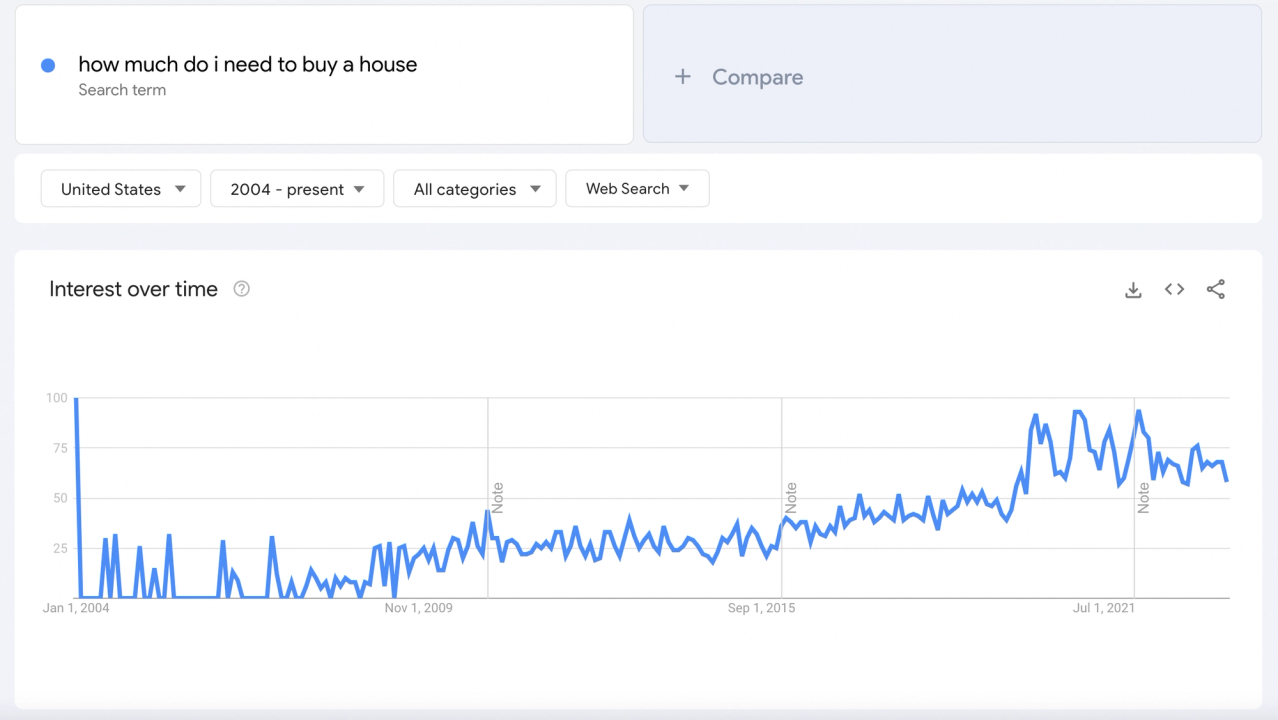
Causes for the crisis:
The dream of homeownership, for many, has long been a cornerstone of achieving personal success and establishing roots. A house symbolizes stability, a space to call one's own, and often, a tangible representation of years of hard work. However, in recent times, that dream has begun to blur for a significant portion of the population. The culprits? Skyrocketing property prices and stagnant wage growth. Together, they have birthed an affordability crisis in the real estate sector that's reverberating across many regions of the world.
Property prices have been on an upward trajectory in several markets, both established and emerging. Multiple factors fuel this rise. In some areas, it's the influx of foreign investments that's driving up costs, as investors see real estate as a stable asset in tumultuous economic times. In others, it's the sheer demand and supply mismatch, with urban migration patterns leading to a crunch in available housing options. Then there are regions where speculative buying and a surge in luxury developments have pushed average prices upwards.
Contrast this with the wage scenario. While property prices gallop ahead, wages, for a vast majority, are moving at a snail's pace. Economic challenges, automation, global competition, and changing labor dynamics have meant that for many, incomes haven't kept pace with the rising cost of living, let alone surging property prices.
The resultant affordability crisis is not just a statistical reality; it's a lived experience for countless individuals. Young professionals, even those with stable jobs, find themselves priced out of markets they grew up in. Families are delaying homeownership, often opting for smaller spaces or relocating to more affordable regions. The societal implications are profound. Homeownership, beyond its financial aspect, brings with it a sense of community, security, and long-term stability. The inaccessibility to this milestone impacts mental well-being, future financial planning, and community structures.
There's also a cascading effect on the rental market. As homeownership becomes elusive, more people turn to rentals, driving up demand and, consequently, rental prices. This leaves many in a challenging predicament, caught between high rents that prevent saving for a down payment and property prices that remain out of reach.
Addressing the affordability crisis requires multi-pronged solutions. It's not just about increasing housing supply, though that's a significant piece of the puzzle. It's also about innovative financing options, rethinking urban planning, ensuring wage growth aligns with living costs, and creating policies that prioritize affordable housing.
The market's response:
The affordability crisis in the real estate sector has sounded alarm bells across various stakeholder groups, prompting a reevaluation of established practices and policies. Recognizing the gravity of the situation and the societal implications of an inaccessible housing market, both developers and policymakers are taking proactive steps to mitigate the challenges and restore the dream of homeownership for many.
Developers, traditionally focused on maximizing profits, are now increasingly turning their attention to affordable housing projects. These projects are designed keeping in mind the financial constraints of the average buyer. By optimizing construction methods, utilizing cost-effective materials, and leveraging efficient design principles, developers are able to offer housing solutions at more competitive prices. Moreover, there's a growing acknowledgment of the long-term value and societal goodwill that can be derived from investing in affordable housing.
On the financing front, there's a flurry of innovative options being introduced to the market. Traditional mortgage structures, often rigid and exclusionary, are being revisited. New schemes that offer flexible down payment options, lower interest rates, or longer repayment terms are emerging. There's also a surge in partnerships between financial institutions and developers to craft housing loans tailored for specific demographic segments, such as first-time homebuyers or young professionals.
Regulatory reforms play a crucial role in reshaping the housing landscape. Policymakers, recognizing the barriers posed by outdated regulations, are implementing reforms to foster an environment conducive to affordable housing. This includes streamlining building approvals, offering tax incentives for affordable housing projects, and revising land use policies to make more land available for residential construction. There's also a growing emphasis on public-private partnerships, where governmental bodies collaborate with private developers to deliver housing solutions that cater to varying income levels.
Trend #5: E-commerce Impact on Real Estate
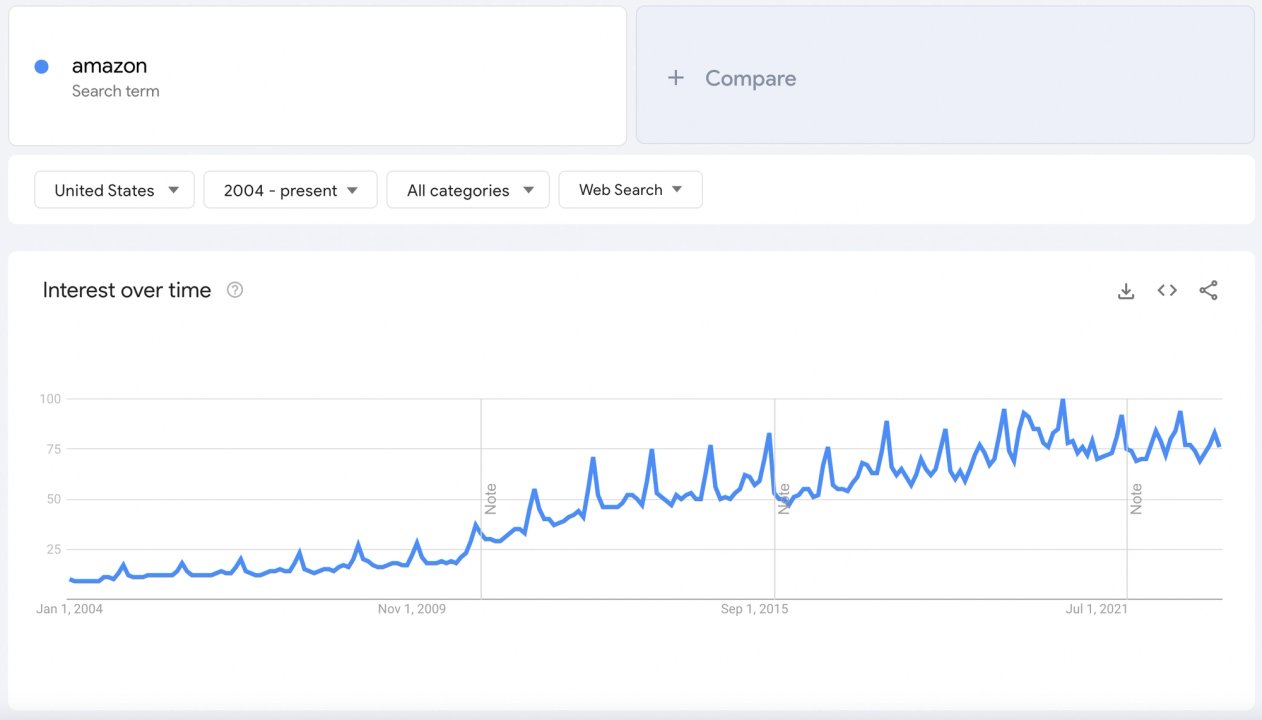
How e-commerce reshapes commercial spaces:
The rapid ascent of e-commerce has ushered in a transformative era for the world of retail and real estate. As consumers increasingly flock to online platforms for their shopping needs, the repercussions are felt far and wide, reshaping the very fabric of commercial real estate and setting forth new paradigms.
Once bustling with activity, many traditional retail spaces, from high street shops to sprawling malls, now grapple with reduced footfall. The convenience of online shopping, bolstered by expansive product ranges, user reviews, and door-to-door delivery, has made it an irresistible option for a significant segment of consumers. As a result, brick-and-mortar establishments, especially those that haven't embraced the omnichannel approach or created unique in-store experiences, are feeling the pinch. Vacancy rates in some areas have surged, and the value proposition of such spaces is being questioned.
However, it's not all doom and gloom for the commercial real estate sector. While traditional retail spaces face challenges, there's a burgeoning demand on the other end of the spectrum: warehouses and logistics centers. The same e-commerce boom that challenges retail establishments fuels this demand.
E-commerce operations hinge on efficient logistics. Once an order is placed online, a cascade of events is set in motion, from order processing and inventory retrieval to packaging and dispatch. These operations necessitate expansive warehouses equipped with state-of-the-art technology for inventory management, order processing, and transportation coordination.
Moreover, the modern consumer's expectation of swift deliveries, sometimes even on the same day, has led to a strategic shift in warehouse locations. E-commerce giants are increasingly seeking logistics centers closer to urban hubs to facilitate quicker deliveries. This has given rise to a new breed of urban warehouses, strategically positioned to serve dense population centers.
In tandem with warehouses, the need for sophisticated logistics centers has grown. These hubs serve as nerve centers, coordinating transportation, managing supply chains, and ensuring that the massive flow of goods resulting from online orders is smooth and efficient. They're the unsung heroes in the e-commerce narrative, ensuring that your order arrives at your doorstep in pristine condition and record time.
Future prospects:
The e-commerce wave, while already having reshaped much of the commercial real estate landscape, still holds a promise of greater transformations to come. As the digital marketplace further entrenches itself into our daily lives and consumer behaviors evolve, the commercial real estate sector finds itself at the cusp of even more significant changes. The future of this dynamic will heavily emphasize logistics infrastructure and the relentless pursuit of delivery efficiencies.
The rise of e-commerce is not just about shifting from in-store shopping to online platforms; it's about an entire ecosystem adapting to new expectations and operational necessities. The success of an e-commerce business no longer solely hinges on the quality of products or the user-friendliness of its website. Instead, the entire supply chain, from storage to the last-mile delivery, plays a pivotal role in determining a brand's reputation and customer loyalty.
Given this, logistics infrastructure will be at the forefront of commercial real estate investments. Warehouses, already experiencing a surge in demand, will need to evolve. We're not just talking about more storage spaces but smarter ones. Facilities equipped with robotics, artificial intelligence, and state-of-the-art inventory management systems will become the norm. The aim will be to minimize human error, expedite order processing, and streamline the entire operations to match the swift pace of the digital marketplace.
Additionally, the positioning of these logistics centers will be crucial. As urban areas burgeon and traffic snarls become commonplace, the strategic placement of warehouses to ensure timely deliveries will be of utmost importance. This may give rise to multi-level warehouses in urban locales, optimizing vertical space when horizontal expansion becomes challenging.
Efficient delivery systems will also take center stage. The traditional delivery truck might soon make way for more nimble and eco-friendly options, like electric vans or even drones. As consumers increasingly expect faster delivery times, e-commerce entities will be under pressure to find innovative solutions that meet these expectations without escalating costs. This could also lead to a rise in localized delivery hubs or pick-up points, where consumers can collect their purchases at their convenience.
Conclusion

These trends highlight the real estate industry's adaptive nature, reflecting societal shifts and technological advancements. By understanding and leveraging these trends, stakeholders can navigate the evolving landscape effectively, ensuring growth and sustainability.
Frequently Asked Questions
- How has technology impacted real estate?
- Technology has revolutionized property tours, market analysis, and even investment methods, making processes more efficient and user-friendly.
- Why are energy-efficient homes becoming popular?
- Rising energy costs and environmental concerns are driving the demand for energy-efficient homes.
- What are mixed-use developments?
- They are properties that combine residential, commercial, and entertainment spaces.
- How is remote work affecting real estate decisions?
- More people are considering suburban living, and home designs now often incorporate office spaces.
- What is real estate crowdfunding?
- It's a method where multiple investors pool money to invest in properties via digital platforms.
Want to learn more?
We'll share with you charts, SEO data, and the businesses that are working, and how you can ultimately ride trend waves, and make over 6 figures capitalizing on your own online business.
👉Become an Exploding Ideas Pro Member to unlock our Deep Dives on how to build your own online business.

